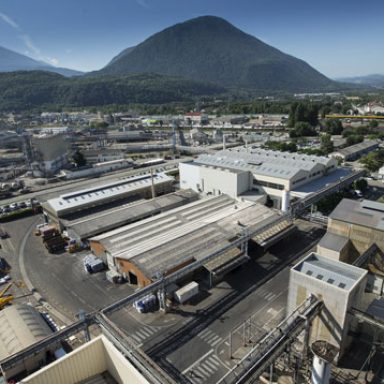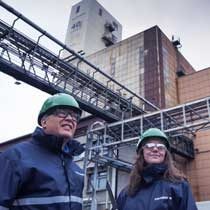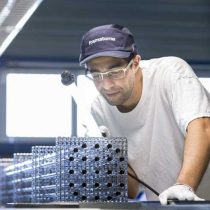Jarrie
Framatome Jarrie
291 Route de l'Electro Chimie
38560 Jarrie

Site Framatome de Jarrie
The Jarrie plant operates at the front end of the global process of converting zirconium ore into nuclear industrial products.
As a key contributor to the global industrial supply change, Jarrie produces products for the nuclear industry along with some by-products for other applications including: aeronautics, medical applications, optics and electronics.
The Jarrie plant site produces zirconium sponge through a series of chemical operations and extractive metallurgy. It also recovers the by-products of zirconium fabrication, such as zirconium and hafnium salts, zirconium and hafnium oxides, hafnium metal and magnesium chloride.
Two major operational units include:
- The Chemicals Operating Unit converts the feed material, fused zirconia, into zirconium tetrachloride through a series of processes conducted in this unit’s three facilities.
- The carbochlorination facility: fused zirconia and carbon black are mixed together and made to react with chlorine in high-temperature furnaces, producing gross hafnium-containing zirconium tetrachloride.
- The sublimation facility uses furnaces to produce purified hafnium-containing zirconium tetrachloride.
- The zirconium-hafnium separation facility uses extractive distillation to separate nuclear grade zirconium tetrachloride from hafnium tetrachloride inside a 40-meter-high extraction column.
.
he Metals Operating Unit converts the zirconium tetrachloride produced in the previous step into zirconium sponge.
- At the Kroll facility, the zirconium tetrachloride is placed in reaction furnaces containing solid magnesium. A pile of zirconium sponge is produced at the end of the hot conversion process. Those piles are further refined by distillation to remove magnesium metal such producing the so-called zirconium sponge.
- In the milling facility, the sponge is crushed and flaked in an inert gas atmosphere. The pieces of sponge are sorted visually and packaged in 200-kg drums. Most of this sponge will be converted into zirconium alloy components to fabricate fuel for nuclear reactors around the world.
Products manufactured at the Jarrie plant
Zirconium: a metal with a density of 6.5 that is produced in the form of a sponge from raw mineral and intended for subsequent conversion into zirconium alloy components for the nuclear industry.
Hafnium: hafnium tetrachloride, a byproduct of nuclear grade zirconium production, is used to form electrolytic hafnium crystals that are refined to produce ultra-pure hafnium, primarily for aeronautic applications.
Salts and oxides: zirconium tetrachloride and hafnium tetrachloride are sold as chemical reagents. They are also used as the raw material for pharmaceutical and electronics applications, among others. Zirconium oxides are used to fabricate ceramic medical prosthetics. Hafnium oxides are used in optical and industrial ceramic applications.
We recruit
Expertise
News

Framatome strengthens its hafnium production capacity for nuclear, aerospace and space applications

